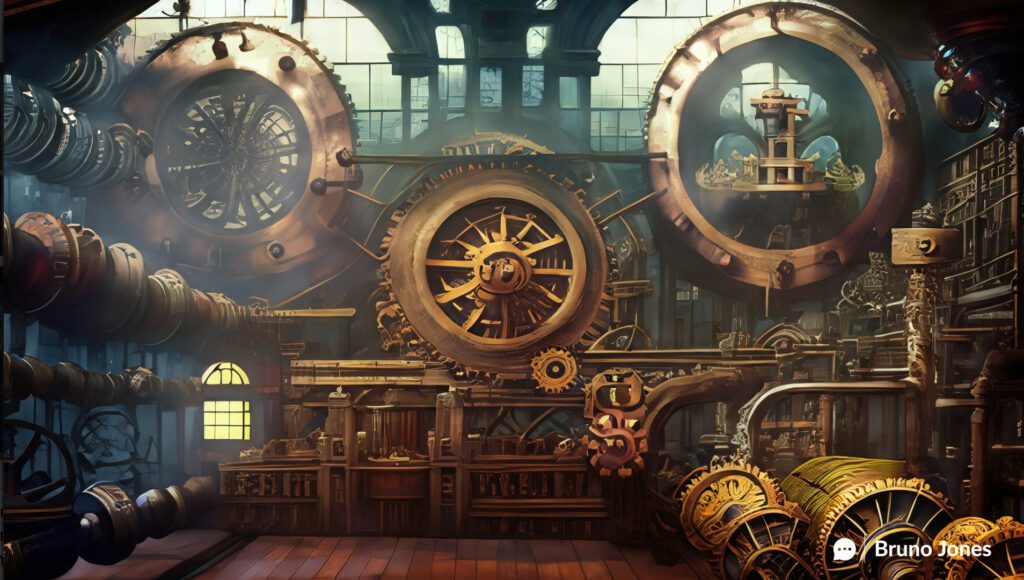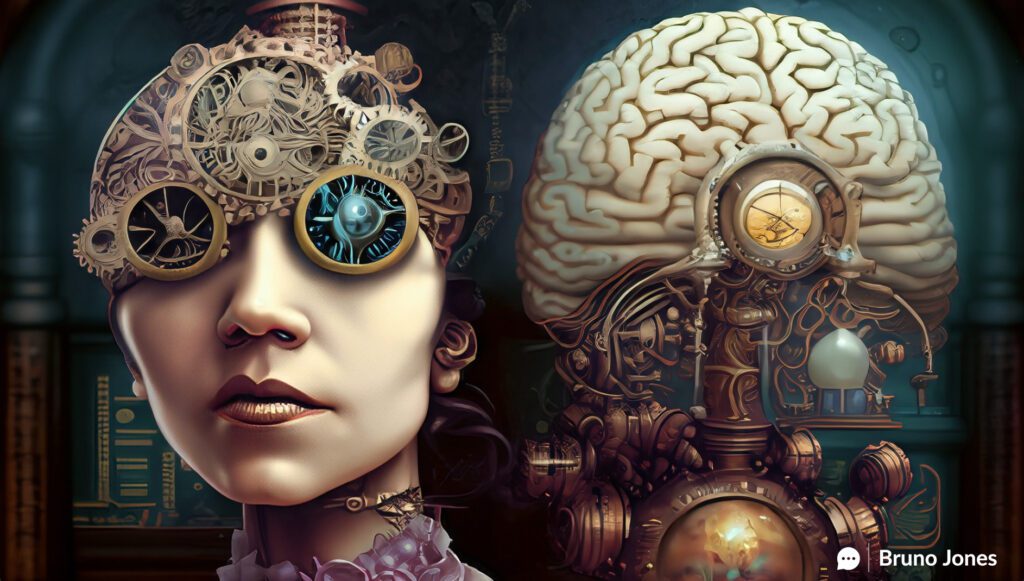Welcome to the realm of experience disruption, a concept revolutionizing how we think about customer engagement and business strategy in today’s dynamic market landscape. I’m Bruno Jones, a seasoned digital marketing expert passionate about delving into the nuances of consumer behavior and market trends. With a background enriched by diverse interactions across various brands, I’ve cultivated a deep understanding of what truly resonates with consumers.
In this exploration, we’re not just talking about making incremental improvements to products or services; we’re discussing a fundamental shift in perspective. It’s about reimagining how consumers interact with brands, products, and services, transforming the ordinary into extraordinary experiences. This shift is crucial in an era where traditional marketing approaches rapidly evolve and consumer expectations are soaring to new heights.
Experience disruption isn’t just a buzzword; it’s a critical tool in the modern marketer’s arsenal, capable of catapulting brands to new levels of success by redefining consumer interactions.

Table of Contents
Understanding Experience Disruption
In the whirlwind of today’s marketing landscape, ‘Experience Disruption’ emerges as a pivotal strategy, redefining how brands connect with consumers. As a digital marketing expert, I’ve observed and implemented these transformative approaches, witnessing their impact and potential firsthand. Let’s dive into what this means and how it’s reshaping the business world.
Definition and Explanation of Experience Disruption:
At its core, experience disruption isn’t about tweaking a product or service. It’s about a radical shift in approach – moving from a focus on the product to the experience it provides. This means rethinking how consumers interact with and perceive a brand, turning every touchpoint into an opportunity for innovation and deeper engagement.
The Shift from Product-Centric to Experience-Centric Approaches:
Traditionally, businesses have concentrated on product features, benefits, and improvements. However, this product-centric view is no longer enough to stand out in a market saturated with similar offerings. The new paradigm is experience-centric – creating value and differentiation through the product and the holistic experience surrounding it. This approach demands a deeper understanding of customer behaviors, desires, and pain points, leveraging these insights to craft unique, memorable interactions.
Real-World Examples of Experience Disruption:
Consider Uber and Airbnb – quintessential examples of experience disruption. Uber transformed the simple act of getting from point A to B. Instead of hailing taxis on street corners, we now have a seamless, app-driven service that has redefined urban transportation.
Similarly, Airbnb didn’t just offer a different type of accommodation; it reshaped the entire travel experience. By enabling homeowners to rent out their spaces, Airbnb created a new travel category, offering more personalized, diverse, and often more affordable stays than traditional hotels.
These examples underscore the essence of experience disruption: reimagining and reinventing the standard way of doing things to create a new, improved, and often unexpected customer experience. As we delve deeper into this concept, we’ll explore how it’s not just about being different but about being boldly innovative in ways that resonate deeply with consumers.
The Role of Customer Insights in Experience Disruption
In my journey as a digital marketing expert, I’ve realized the undeniable power of customer insights in shaping experience disruption. Let’s delve into why understanding and observing your customers is not just important but critical and how you can harness this knowledge to revolutionize your marketing approach.
The Importance of Deep Customer Understanding and Observation:
Experience disruption hinges on a profound understanding of what your customers truly desire, often before they know it themselves. It’s about observing their needs, behaviors, emotions, and unspoken expectations. This deep insight enables you to craft experiences that are not just appealing but also genuinely transformative.
Techniques for Gathering Actionable Insights:
1. Provocative Questioning: Asking questions challenging the status quo can reveal hidden customer needs and desires. For example, instead of asking how to improve a product, ask what would make the customer’s life radically better.
2. Observing Customer Behaviors: Sometimes, what customers say and what they do are different. Observing them in their natural environment can uncover insights that surveys or focus groups might miss.
3. Engaging in Empathetic Listening: Truly listen to what customers say, including the emotional undertones. This helps in understanding their pain points and aspirations on a deeper level.
Strategies for Implementing Experience Disruption
In the dynamic world of digital marketing, where I’ve honed my skills and insights, implementing experience disruption effectively is key to standing out. Here, I’ll share strategies that have proven successful in this realm, focusing on creating more tailored experiences, simplifying customer interactions, and leveraging the power of social media and word-of-mouth.
Focusing on Specific Market Niches to Create More Tailored Experiences:
One of the most effective strategies is zeroing in on specific market niches. By understanding a well-defined audience segment’s unique needs and preferences, you can craft experiences that resonate more deeply with them. This could mean personalizing your service or product to address the specific challenges or desires of that niche.
For instance, in my experience, I’ve seen brands successfully appeal to niche markets by offering products or services catering to unique hobbies, lifestyle choices, or professional needs, thereby creating a more personalized and impactful customer experience.
Emphasizing Simplicity and Ease of Use in Customer Interactions:
In today’s fast-paced world, simplicity and ease of use are non-negotiable for customers. Experience disruption often means removing friction and making interactions as smooth and effortless as possible.
This can be achieved through intuitive website design, streamlined purchasing processes, or customer service that’s both accessible and efficient. Reflecting on my experiences, I’ve noticed that brands prioritizing a seamless user experience, from first contact to post-purchase support, often see higher customer satisfaction and loyalty.
Harnessing Social Media and Word-of-Mouth as Powerful Tools for Experience Sharing:
In the era of digital connectivity, social media, and word-of-mouth have become powerful tools for experience sharing. Encouraging customers to share their experiences with your brand on social media platforms can amplify your reach and impact. Creating share-worthy experiences – those that are unique, delightful, or exceptionally convenient – can trigger organic conversations and endorsements.
From my professional journey, I’ve observed that brands that skillfully utilize user-generated content and foster a community around their brand enhance their visibility and build a more authentic and trusted relationship with their audience.
Implementing these strategies requires a deep understanding of your audience, a commitment to innovation, and an unwavering focus on delivering value at every touchpoint. By focusing on specific niches, prioritizing simplicity, and leveraging social media for organic advocacy, you can disrupt the conventional experience and create a unique space for your brand in the market.
Challenges and Considerations in Experience Disruption
As I reflect on my journey in digital marketing, I’ve encountered various challenges while implementing experience disruption. It’s a field that demands constant innovation, a balance between technology and human-centric design, and overcoming traditional marketing mindsets. Let’s explore these aspects in more detail.
The Necessity of Continuous Innovation and Adaptation:
In the ever-evolving landscape of consumer expectations and technological advancements, resting on one’s laurels is not an option. Continuous innovation is crucial. For instance, as a digital marketing expert, I’ve seen how brands that fail to evolve quickly become obsolete.
It’s about always staying ahead, anticipating consumer needs, and being ready to pivot strategies in response to market shifts. Innovation isn’t just a one-time effort; it’s an ongoing commitment to excellence and relevance.
Balancing Technological Advancements with Human-Centered Design:
While technology plays a significant role in experience disruption, it’s vital not to lose sight of the human element. Balancing cutting-edge tech with a design that prioritizes human needs and emotions is key.
The most successful disruptive strategies seamlessly integrate technology to enhance, not replace, the human experience. For example, a website’s ease of navigation and personalization should make the customer’s journey more enjoyable and less about showcasing technological prowess.
Overcoming the Barriers of Traditional Marketing Mindsets:
Breaking free from traditional marketing approaches is often one of the biggest challenges. The shift from a product-centric to an experience-centric approach requires a fundamental change in thinking. It’s about moving away from conventional metrics and strategies to embrace innovative, customer-focused tactics. In my career, brands have struggled to let go of tried-and-true methods in favor of uncharted, potentially more rewarding strategies. Embracing experience disruption means being open to risks and new ways of connecting with customers.
Navigating these challenges requires creativity, agility, and a deep understanding of technology and human psychology. By continuously innovating, balancing tech with human-centric design, and overcoming traditional mindsets, brands can successfully implement experience disruption and stand out in a crowded marketplace.
Want to Master Your Market? Discover How with My Keyword Research Tool!
The Future of Experience Disruption
As a digital marketing expert deeply immersed in the evolving world of customer engagement, I’ve been closely observing how experience disruption shapes the future. Here are my insights on what lies ahead:
Predictions for How Experience Disruption Will Evolve with Emerging Technologies like AI:
Artificial Intelligence (AI) is set to play a pivotal role in experience disruption. As AI technologies become more advanced, they will enable hyper-personalized experiences where customer interactions are responsive and predictive. AI can help understand customer preferences at a granular level, tailor experiences in real-time, and even anticipate needs before they are explicitly expressed. However, the challenge will be integrating AI in a way that complements rather than replaces the human elements of customer service.
The Enduring Importance of Human Elements in Customer Experience:
Despite the technological advancements, the human element in customer experience remains irreplaceable. Customers yearn for genuine connections, empathy, and personalized attention. The brands that succeed use technology to enhance these human elements. As we look ahead, the brands that will stand out will find innovative ways to merge technology with a deep understanding of human emotions and behaviors.
Encouraging Creativity and Out-of-the-Box Thinking in Marketing Strategies:
The future of experience disruption will be shaped by creativity and innovative thinking. As the landscape becomes increasingly competitive, brands must think outside the box to capture customer attention and loyalty. This means not just following trends but being bold enough to set them. It involves looking at every aspect of the customer journey and asking, “How can we do this differently?” Creative thinking will be the key to unlocking new possibilities in customer experience.
To sum up, the future of experience disruption is an exciting convergence of technology, human-centric design, and creative innovation. As we move forward, brands that embrace these elements, constantly evolving and pushing boundaries, will be the ones that thrive in this new era of customer engagement.
Recap: Experience Disruption, The Secret Weapon Every Marketer Needs!
Reflecting on our deep dive into the world of experience disruption, it’s clear that this concept is more than just a fleeting trend in the marketing landscape. It’s a fundamental shift in customer engagement and brand strategy. As a digital marketing expert, I’ve seen the transformative power of experience disruption and its critical role in setting brands apart in a crowded marketplace.
Summarizing the Key Takeaways on Experience Disruption:
Experience disruption is about shifting from a product-centric approach to an experience-centric approach, creating unique, memorable interactions that resonate deeply with customers. It involves continuous innovation, balancing technological advancements with human-centric design, and breaking free from traditional marketing mindsets. Real-world examples like Uber and Airbnb demonstrate how reimagining the customer experience can lead to groundbreaking success.
The Imperative for Brands to Constantly Evolve and Differentiate Their Customer Experiences:
In today’s dynamic market environment, staying static is not an option. Brands must continuously evolve, seeking new ways to enhance and differentiate their customer experiences. This means being attuned to changing consumer behaviors, embracing new technologies, and always putting the customer at the heart of every decision.
Marketers and brand strategists need to rethink and innovate our approaches to customer engagement. This involves stepping out of our comfort zones, challenging conventional wisdom, and embracing creativity and out-of-the-box thinking. We need to leverage insights, harness the power of technology, and most importantly, keep the human element at the forefront of our strategies.
Experience disruption is not just a strategy; it’s a mindset. It’s about seeing opportunities where others see challenges and redefining the norms to create experiences that truly matter to customers. As we move forward, let’s embrace this mindset and lead the charge in shaping a future where extraordinary customer experiences are the norm, not the exception.
Please contact me at if you need personalized guidance or help implementing these strategies effectively, contact me at BrunoJones.com.
About Bruno Jones
Bruno Jones, based in Denver, is a seasoned digital marketing expert with over 20 years of experience. He’s renowned for his expertise in enhancing online brand presence, particularly for companies in Colorado and Utah. His educational background in electrical engineering and a transformative approach to digital marketing from Columbia Business School have shaped his unique strategy, merging technical know-how with creative flair.
Bruno excels in harnessing consumer psychology and game theory to craft compelling digital narratives. His blog is a treasure trove of advanced SEO, social media, email marketing insights, and more, catering to both industry professionals and enthusiasts. Each of his posts showcases his knack for simplifying complex ideas into practical, outcome-oriented tactics, cementing his status as a pioneer in digital marketing innovation.



